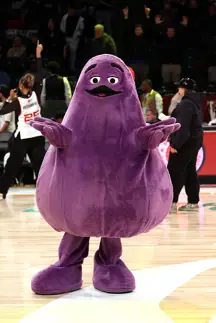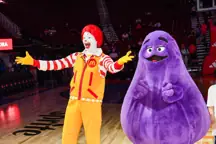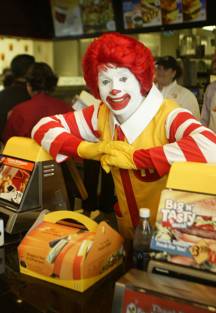Have you ever wondered what Grimace actually is?
The big purple blob seemed to be a lot more present in the past, but his presence is still felt at McDonald's.

I'll be honest and say that I had absolutely no idea what he was meant to be before these reports came out, and I'm still a bit uneasy about it.
For years, fans have been left to wonder about Grimace’s true identity, with some speculating that he might represent a milkshake, given his color and association with McDonald’s drinks.
However, in a new report from The Daily Mail, McDonald’s has clarified this mystery once and for all, though not everyone is convinced.
McDonald’s has made a habit of offering vague and conflicting statements about Grimace’s backstory, leaving plenty of room for speculation.
McDonald’s has officially shared that Grimace, the purple character long associated with the brand, is actually a taste bud.
Back in 2021, Brian Bates, a celebrated McDonald’s manager in Canada, told CBC News that Grimace is “an enormous taste bud, but a taste bud nonetheless.”
Bates explained that the character's role was to symbolize the idea that McDonald’s food just tastes good.
This “taste bud” theory isn't new, either. In 2012, McDonald's corporate social media account posted a message that suggested Grimace’s true nature: “Grimace is the embodiment of a milkshake, though others still insist he’s a taste bud.”
People were quick to react, with one writing on X: "Grimace being a giant tastebud is kinda horrifying."
A second wrote: "GRIMACE IS A TASTEBUD??? I THOUGHT HE WAS JUST A SILLY PURPLE GUY!!!!"
As for the official line from the company? It seems they’re okay with leaving it all a bit unclear.
In 2021, a McDonald’s spokesperson told People: “Whether he’s a taste bud, a milkshake or just your favorite purple blob — the best part about Grimace is that he means different things to different people. Whatever he is, we’re just proud our bestie makes people happy.”

No matter how you define Grimace, one thing is certain: the character has evolved dramatically over the years.
In the past, he wasn't quite as friendly as the jolly figure we know today. According to Roy T. Bergold Jr., former McDonald’s vice-president of advertising, the original Grimace was “scaly, mean-looking, had four arms, and had no charm whatsoever.”
He went on to explain in QSR Magazine that Grimace “scared kids,” which is quite the contrast to today’s version.
Over time, McDonald’s transformed Grimace into the lovable, two-armed, purple blob we’ve come to know and adore, with a passion for McDonald’s milkshakes and companionship with Ronald McDonald.
Speaking of the clown himself, have you noticed that he's been absent recently?
To understand why Ronald disappeared from the spotlight, we have to look back at the unsettling trend that emerged in 2016: the rise of "killer clowns."
For a brief, yet terrifying period, people across the globe were dressing up as creepy clowns and scaring the public.

The phenomenon caused widespread panic, with reports of these frightening clowns lurking in parks, near schools, and even trying to lure children into the woods with green laser lights and bags of cash.
It all started in Greenville, South Carolina, in August 2016, when police began receiving numerous reports of clowns behaving strangely in the community.
The trend soon spread like wildfire, with incidents cropping up in places like Canada, Australia, and New Zealand. While no one really knows why this craze started, some speculated it might be linked to a publicity stunt for a horror movie or a coordinated hoax.
As the clown sightings began to escalate, McDonald's took notice. In response to the growing hysteria, the company released a statement expressing caution over Ronald McDonald's participation in public events.
They acknowledged the "current climate around clown sightings in communities" and chose to pull back the mascot's appearances.
